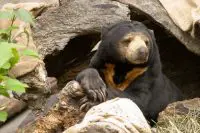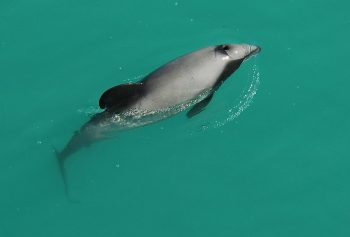The sun bear (Helarctos malayanus) or Malayan sun bear is the smallest of all bears. It is an Asian subspecies. The sun bear is also called honey bear probably because it loves to eat honey from honeycombs. Unique among its characteristics is that it has two bib-shaped golden patches which are quite visible on its shoulders.
Adult bears measure 120–150 cm in head-body length and weighs up to 60 – 176 pounds. Females are 10 – 20% smaller than the males. The length of the tail is about 1.2–2.8 inches. They are only half the size of American black bears.
Unlike any other bear species, the sun bear possesses unusually long tongue reaching a length of 20–25 cm. The tongue is quite effective in that it allows the bear to extract honey and insects.
Malayan sun bears ar e found in Southeast Asia including Cambodia, Bangladesh, Thailand, Indonesia, India, Myanmar, Vietnam, Malaysia, Laos, and China.
e found in Southeast Asia including Cambodia, Bangladesh, Thailand, Indonesia, India, Myanmar, Vietnam, Malaysia, Laos, and China.
Malayan sun bears have an omnivorous diet. They will feed on termites, bee larvae, fruits, fig, honey, insects, ants, beetle larvae, palms, shoots, earthworms, eggs, deer, turtles, and birds. They detect food using their extremely keen sense of smell.
Sun bears often engage in social activities such as head bobbing, mock fighting, and hugging.
Sun bears do not hibernate—they remain active all year round. They become active in daylight hours. Sun bears will find hollow logs, cavities, tree roots, and fallen logs to relax. They spend nearly one-fourth of their day in sleeping. They are highly social animals.
The female gives birth to 1 – 2 cubs after a gestation period of 95 to 174 days. Newborn cubs weigh up to 280–325 g. The cubs will not reach maturity until they become 3 – 4 years of age.
The maximum lifespan of sun bears is about 30 years in captivity. In the wild habitat however they can live up to 25 years.
Humans are probably the primary threats to the sun bear’s population. They are losing grounds to the habitat loss, commercial hunting, illegal logging, poaching, and deforestation.
The IUCN has listed sun bear population as Vulnerable.





